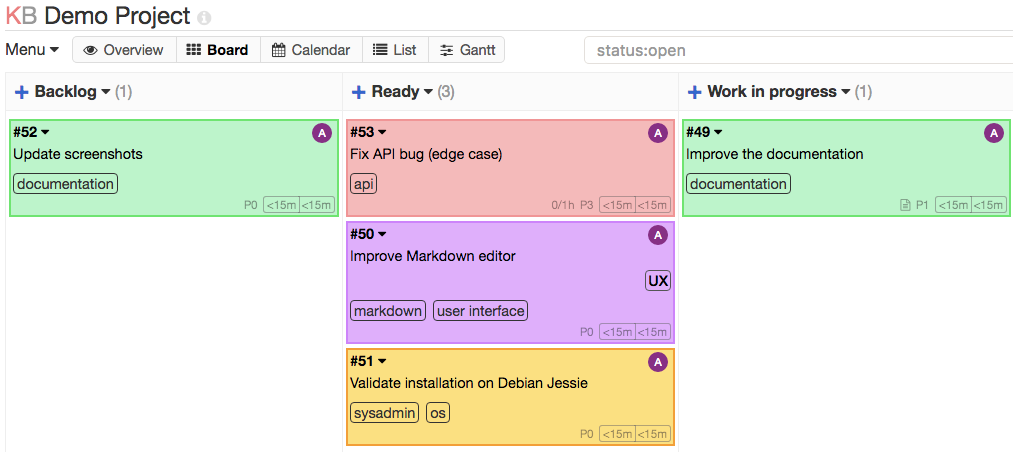The fascination in the West of Japanese concepts and trends have existed ever since the country opened itself to foreigners in 1853. One recent trend taking over Western workplaces is Kanban. However, this form of agile team management was not recently invented in some glitzy Tokyo skyscraper, but actually traces back to the early days of Toyota.
Back in the 1940s, the car manufacturer studied supermarkets to see how customers can get quality and quantity in such a fast pace environment. They noticed that the supermarket will never stock something that it doesn’t believe will sell. In 1953, the car company implemented a new strategy based on their findings which were: to make only what is needed, when it’s needed, how it’s needed, a process now known as “Just-in-time”. This streamlining process would use ‘signposts’ to direct staff where a piece needs to go after each stage, hence the name Kanban which means signpost in Japanese.
Kanban Today
Kanban entered the Western world of business when software companies discovered it in the mid-2000s. It quickly became an alternative to SCRUM and others. One key difference is that it doesn’t set due dates, instead, it’s more about following the process from start to finish. The emphasis is getting on with a task, by dealing with each stage as it comes rather than planning extensively how it will pan out. This supports flexibility as decisions are amended during the process.
A Kanban chart has 3 or 4 or more columns displayed on a simple physical chart or digitally with software. While the format may vary it must always have something along the lines of “requested”, in “progress” and “done”, to be a true Kanbar chart. Tasks line up in queue traveling from column to column as they work towards the end.
Kanban nowadays is used in major companies across the globe such as Spotify and Volvo’s IT department. It is a simple yet powerful way to boost your team without making major new changes. All you need is a big board and some post-it notes. That said Kanban does have some pitfalls, especially if not implemented correctly. One problem is it can become less effective if sudden changes occur. For example, an influx of orders can lead to a crowded Kanboard, due to the fact, tasks don’t have a set due date. A Kanban board, though focused on minimalism needs some form of management to keep it going.
How To Setup Kanban
When Kanban works, it really works, but how do you make sure your company implements it properly? Well here are some guidelines on how to get your Kanban up and running:
Map out your development process. You should include the origins of the ideas and how it will become a finished product:
- Plan your Kanban: How many columns do you need and what should they be named? Remember you can always add and take away later, but for the beginning, you want to establish how a task graduates from one column to the next.
- Set policies: Not all tasks are created equally, so you need to set how you will prioritise tasks and when to decide a task has reached a dead end.
- Not all tasks are going to make it to completion. It’s really important the wrong tasks don’t suck time and energy. Focus on tasks that will actually reward you.
- You need to decide how strict these ranking of tasks is going to be. If too strict, it is harder to adjust tasks based on current needs, if too lax then you risk your Kanban being overcrowded and all over the place.
- Pick a system: Is it going to be a simple physical board or a digital solution. If you pick a physical in-office board, then it relatively simple. However, if you pick a digital solution, you will need to see which service provides the best product for you and your company.
- Introduction and usage: When you iron the details out, it’s time for implementation. Despite its simple nature, you still need to train your staff on how to use it.
In addition, do not expect your board to look the same on day 101 as it will on day 1. Taking the Kanban philosophy to heart, you have to adapt your board as your needs arise. Focusing too much on how you think your Kanban board should look rather than how it should work defeats the purpose of its implementation. Don’t panic if it is not exactly how you imagine it to be.
These are just starter guidelines, what works for your company is dependent on various different factors. If you are planning on changing your team management style, ask your self why? Look at what do you hope to change and what do you think you can gain from using the Kanban. Doing it because its in-trend is not a good enough reason.
Conclusion
Kanban is a great example of looking to the past for solutions that work well today. Like other Japanese trends bought to the West, it focuses on minimising waste. However, like any trend, it is not flawless. There is a reason it’s not a default standard and why other techniques like SCRUM are still widespread. It has inherited flaws, majorly due to the fact it promotes abandoning timelines. It needs a team dedicated to following its principles. In addition, the Kanban leader needs to make the wrong projects don’t get unjust attention or priority.
Here are Wiredelta, for us we use elements of Kanban as well as others. Evidentally, from the success of our Cases, this is what works for us. If you a starting a new project in software, web or mobile, why not let us take care of it. Feel free to reach out to us, to find out more.
